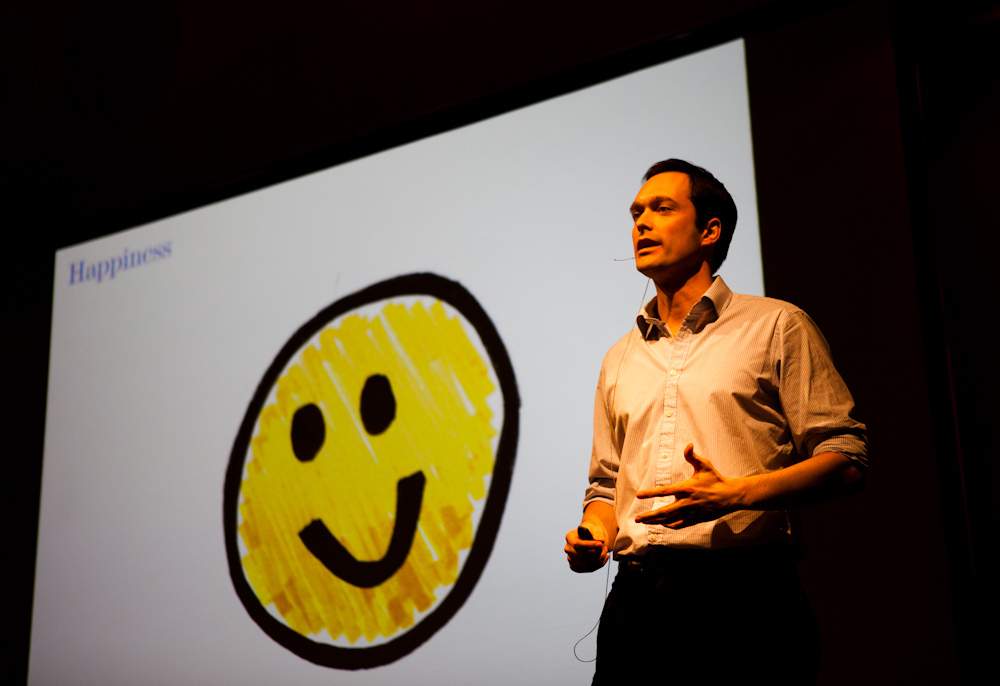
My students in the Working with Emotional Intelligence class at Southern Oregon University recently presented on an emotional intelligence (EI) topic they wanted to know more about. I was delighted at the number who picked a positive psychology topic. That’s what I chose four years ago when I took an EI class as part of my Master in Management program. That got me thinking back …
Here’s how my thesis began: Previous business bestsellers (e.g., One Minute Manager, Who Moved My Cheese, 7 Habits of Highly Effective People) may have offered good advice, and while much of this advice is intuitive, it was not based on research.
PsyCap
Research has demonstrated that specific psychological states contribute to an organization’s success. Developed by Fred Luthans, the premise of Psychological Capital (or PsyCap) is that a company can enhance its leadership, employee development and performance by developing four psychological states in its employees: hope, confidence [efficacy], optimism and resiliency. PsyCap is something that can be cultivated and can have a profound effect on an organization’s bottom line (Luthans, Avolio, Avey & Norman, 2007).
PsyCap is an individual’s positive state of psychological development characterized by the four constructs of:
- Hope: persevering toward goals and making adjustments along the way to succeed
- Confidence [efficacy]: taking on and putting in the necessary effort to succeed at challenging tasks
- Optimism: feeling positive about succeeding now and in the future
- Resiliency: the ability to sustain and bounce back from problems and adversity to attain success (Avey, Luthans, Smith & Palmer, 2010)
PsyCap is made up of the combination of all four states because together they can predict performance outcomes more accurately than any single one (Avey, et al., 2010).
Outcomes
Through his research, Luthans confirmed that these states can be learned and the outcomes measured. He worked with a well-known Silicon Valley high-tech firm, where 75 engineering managers participated in PsyCap training. After subtracting the cost of the training and the engineers’ time, the calculated return on investment was 270% (Hope, Optimism and Other Business Assets, 2007).
Increasing Your PsyCap
I appreciate my students pointing me back to my PsyCap roots, and I love that I am able to use this research to help people and organizations around the Rogue Valley and beyond. If your organization would benefit from greater PsyCap, give me a call at 541.601.0114. Let’s see how successful you can be!
References
Avey, J., Luthans, F., Smith, R., & Palmer, N. (2010). Impact of positive psychological capital on employee well-being over time. Journal of Occupational Health Psychology, 15(1), 17–28. doi:10.1037/a0016998.
Hope, optimism, and other business assets: Q&A with Fred Luthans. (2007, January 11). Gallup Management Journal. Retrieved from http://gmi.gallup.com.
Luthans, F., Avolio, B.J., Avey, J.B., & Norman, S.M. (2007, Autumn). Positive psychological capital: measurement and relationship with performance and satisfaction. Personnel Psychology, 60(3), 541–572. doi:10.1111/j.1744-6570.2007.00083.x.


 Your culture is your brand; your brand is your culture. The two are one in the same—inextricably intertwined. It’s where marketing, positive psychology and innovative business practices intersect. After spending more than 25 years as a professional marketer, I watched the concept crystallize during two amazing days last week in
Your culture is your brand; your brand is your culture. The two are one in the same—inextricably intertwined. It’s where marketing, positive psychology and innovative business practices intersect. After spending more than 25 years as a professional marketer, I watched the concept crystallize during two amazing days last week in 






